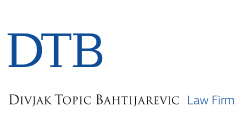Contributed by Divjak, Topic & Bahtijarevic.
1. Market Overview
The Zagreb Stock Exchange (ZSE) was established in 1991 by 25 banks and 2 insurance companies. Currently, the ZSE is owned by around 40 banks and brokerages. In 2007, the Varazdin Stock Exchange merged into the ZSE and since then the ZSE has been the sole Croatian securities market. In 2015, the ZSE acquired shares in the only Slovenian stock exchange – the Ljubljana Stock Exchange – and subsequently introduced a common trading system to enhance trading on these two markets and enable simultaneous floating of shares.
Despite the fact that from 1995 to 2000 market capitalization of the ZSE increased ten times (982.6%), the market was severely hit by the 2008 crisis and was not as strong as it was before the crisis. The current COVID-19-related economic turmoil hit the market again and it remains to be seen when and how the market will be at least remotely close to what it was immediately before.
In the past few years, the market was dominated by trading of shares in some Croatian blue-chip companies, whilst IPOs were almost unknown. The main drivers of trading were high-profile takeovers which spur speculative trading in expectation of gains in mandatory takeover offers which followed such takeovers. Trading of bonds and other debt securities was very modest, with only one or two notable issuances per year. The main players on the market have been pension funds, which are loaded with cash and which have constantly been putting pressure on the local securities regulator to ease conditions for their investments because their demand for investment was higher than the potential of the market. The reason for this shallow market situation was a large number of sizeable companies which decided to delist because of widespread sentiment that the downsides of the listing were greater than its benefits. Another blow to the market was the collapse of the largest Croatian private company, Agrokor, whose subsidiaries accounted for a significant portion of the most attractive companies listed.
2. Overview of the local stock exchange and listing segments (markets)
Trading of securities on the ZSE is conducted through an electronic trading system – Xetra – which enables all participants to trade in real time. Trading hours on business days are from 9:00-16:30 CET, with pre-trading period from 8:00-9:00 CET.
ZSE operates the Regulated Market and multilateral trading platform (CE Enter Market).
2.1. Regulated market
On the Regulated Market, transparency requirements encompass publication and delivery of all the important information regarding issuers and listed securities which may have an effect on traded instruments, as prescribed by law and the ZSE Rules. In addition, listing on the Regulated Market generally involves the publication of listing prospectus, as previously approved by the local financial services regulator.
Financial instruments which may be traded on the regulated market are those for which the ZSE has obtained the regulator’s approval or in respect of which the approval stems from the provisions of the Capital Markets Act (CMA), specifically:
- shares or other securities equivalent to shares which represent an interest in the capital or in the shareholders’ rights in a company, as well as depositary receipts;
- bonds and other types of securitised debt, also including depositary receipts related to such securities;
- any other securities which entitle their holders to acquire or sell such negotiable securities or which constitute the grounds for a cash payment of the amount determined on the basis of negotiable securities, currencies, interest rate or yields, commodities, indices or other measures of size;
- money market instruments: treasury bills, central bank bills and commercial paper, certificates of deposit, and other instruments which are customarily traded on the money market; and
- units in collective investment undertakings, in accordance with the provisions of the CMA.
2.1.1. Listing Segments
The Regulated Market has the following listing segments (in order of rank and transparency):
- Prime Market
- Official Market
- Regular Market
The Prime Market is the most demanding market segment with regard to the requirements imposed on the issuer, especially in relation to transparency. The issuers on the Official and Regular markets must submit only a minimum of information stipulated by the CMA, plus additional requirements as set out in the ZSE Rules.
2.2. Multilateral trading platform
The CE Enter Market is a multilateral trading facility consisting of the following segments:
- CE Enter - Alter
- CE Enter - Fortis
- CE Enter - X
The CE Enter Market is an alternative market managed by the ZSE. The main characteristics of the CE Enter Market are lower transparency requirements for the issuers and financial instruments compared to the regulated market and, consequently, a higher associated risk of investing in the financial instruments traded on the CE Enter Market. The ZSE provides a sufficient level of publicly available information on the financial instruments traded on the CE Enter Market to ensure orderly trading and pricing. The provisions of the CMA, other regulations and subordinated legislation adopted pursuant to such regulations concerning market abuse shall apply to trading on the CE Enter Market.
3. Key Listing Requirements
The listing requirements for the admission of equity and debt securities can be divided into general requirements, applicable on all listed securities, and specific (per segment) requirements.
The general terms for regulated market listing on the ZSE are:
- the financial instruments being listed on the regulated market shall be those which may be traded in a fair, orderly and efficient manner;
- the issuer shall be duly registered or otherwise validly established in accordance with the regulations of the Republic of Croatia or the country of the issuer’s domicile;
- the applicant shall comply with the obligation to publish the prospectus and disclose other information, in accordance with the provisions of the CMA;
- financial instruments must be freely negotiable;
- efficient transaction settlement must be provided in respect of any financial instruments for which an application for listing on the regulated market has been submitted (this criterion will be deemed to be met if a financial instrument is issued in a dematerialised form and registered with the central depository or central register and included in the clearing and/or settlement system);
- the use of LEI is mandatory for issuers of financial instruments listed on regulated market; and
- pre-bankruptcy, bankruptcy or liquidation proceedings have not been instituted against the issuer of a financial instrument.
3.1. Equity Capital Markets
When it comes to listing of shares on the Prime Market (in addition to the general requirements listed above), the following requirements must be met:
- the issuer must have an investor relations function in place;
- free float min. 35%;
- at least 1000 shareholders;
- market capitalization of min. HRK 500,000,000.00;
- the issuer of shares shall enter into a market making contact with at least one market maker;
- the supervisory board of the issuer must have at least one independent member;
- at least one member of the audit committee shall be independent of the issuer;
- the audit report must not contain modifications of the auditor’s opinion;
- total fees received by the statutory auditor or the audit firm from the issuer do not exceed the threshold laid down in Article 4(3) of Regulation (EU) No 537/2014;
- the issuer of shares must not have imposed a market protection measure under the ZSE Rules for a period of 1 (one) year prior to the date of submission of the Prime Market listing application; and
- the issuer shall develop and disclose its dividend policy to the public.
- The requirements for listing of shares on the Official Market (in addition to the general requirements listed above) are:
- at least 25% of the shares shall be distributed to at least 30 shareholders. In exceptional cases, shares may be listed even if they do not meet the free float requirement, if at least 10% of the issue or total value of shares is held by 50 shareholders;
- market capitalization min. HRK 8,000,000.00; and
- the issuer must have an investor relations function in place.
For the shares to be listed on the Regular Market (in addition to the general requirements listed above), at least 15% of the shares must be distributed to the public. In exceptional cases, shares may be listed even if they do not meet the free float requirement, since, considering a large number of same-class shares and the free float ratio, this does not compromise orderly market functioning.
3.2. Debt Instruments
Debt instruments may be traded on the Regular Market and on the Official Market. In addition to the general requirements for listing all securities (referred to above), for debt instruments to be listed on the Official Market, the nominal amount of the loan for debt securities may not be less than HRK 1,500,000.00.
4. Prospectus Disclosure
4.1. Regulatory regimes and local market practice
Rights and obligations pertaining to offering of securities to the public and admitting securities to trading on the regulated market in the Republic of Croatia (RoC), including the obligation to publish a prospectus and exemptions related thereto, are regulated by the Capital Market Act (CMA), as well as the European Union legislation.
The Commission Regulation (EC) No. 809/2004 of 29 April 2004 implementing Directive 2003/71/EC of the European Parliament and of the Council as regards information contained in prospectuses lays down the rules for the preparation of prospectus and, in Croatian legislation, was implemented through the provisions of CMA. The respective Regulation was fully replaced by the Regulation (EU) 2017/1129 of the European Parliament and of the Council of 14 June 2017 on the prospectus to be published when securities are offered to the public or admitted to trading on the regulated market, and repealing Directive 2003/71/EC (the “Prospectus Regulation”), representing a new prospectus regime in the European Union.
Since the Prospectus Regulation is directly applicable in all EU Member States since July 2019, CMA also needed to be amended and supplemented in order to meet the requirements set out in the Prospectus Regulation. In the light thereof, in February 2020 amendments to CMA have entered into force in order to ensure full application of the Prospectus Regulation, appointing the Croatian Financial Services Supervisory Agency (CFSSA) as the Croatian competent authority and providing other novelties related to prospectuses within the new European Union regulation. A novelty related to the obligation to publish prospectus for public offerings of securities was introduced by raising threshold to EUR 8,000,000 (previously EUR 5,000,000), thus lowering the costs of the issuance of the securities in RoC and unburdening the issuers and the CFSAA.
Furthermore, the prospectus regime in RoC is governed by the delegated legislation which includes the Commission Delegated Regulation (EU) 2019/980 relevant for the format, content, scrutiny and approval of the prospectus (the “PR Regulation”) and the Commission Delegated Regulation (EU) 2019/979 relevant for the technical standards on key financial information in the summary of a prospectus, the publication and classification of prospectuses, advertisements for securities, supplements to a prospectus, and the notification portal (RTS Regulation). When drafting a prospectus, it is also necessary to take into account documents issued by the European Securities Markets Authority (ESMA), such as ESMA Guidelines on Alternative Performance Measures and bylaws issued by the CFSAA.
The Prospectus Regulation lays down that prospectus is to be published in two cases: (i) when the securities are offered to the public in the territory of RoC and (ii) when the securities are admitted to trading on the regulated market in RoC. Based on the issuer’s nature, type of the securities offered to the public or admitted to trading on the regulated market and circumstances of the issuer, prospectus contains all necessary information to enable investors to make an informed assessment of the assets and liabilities, financial position, profit and losses and prospects of the issuer and of any guarantor, as well as of the rights related to the respective securities. Therefore, information contained in the prospectus must be accurate and complete and presented in an easily analysable and comprehensible form.
Prospectus may be drawn up as: (i) a single document (containing all the information in one document), (ii) separate documents (information is contained in several separate documents), composed of: registration document (containing information on the issuer) and securities note (containing information on securities to be offered to the public or admitted to trading on the regulated market), and summary (providing, in a brief manner and in non-technical language, the essential information enabling investors to make an informed assessment of the characteristics and risks associated with the issuer, any guarantor and the securities).
Among other, the Prospectus Regulation requires the following information to be included in prospectus:
(i) information on the issuer, issuer’s business operations, organisational structure and assets, and details on the products and services it provides and the factors which affect the issuer’s business;
(ii) risk factors specific for the issuer and offered securities in a limited number of categories, informing potential investors of the material risks. The risk factors need to be specific for the issuer’s industry and defined by taking into account the probability of their occurrence;
(iii) audited financial information covering the latest three financial years prepared in accordance with IFRS or in accordance with national accounting standards where these standards are considered equivalent to IFRS for a third country issuer;
(iv) details of any legal proceedings having a significant effect on the issuer’s and or group’s financial situation, involving the issuer in the last year;
(v) information on significant changes in trends or financial position of the issuer since the last financial period for which financial information has been published;
(vi) listed information on the members of the administrative, management or supervisory bodies, senior management and founders of the issuer with remuneration, benefits and interests in the shares of the issuer and with respect to the company’s corporate governance;
(vii) details of any major shareholders of the issuer, whose interest must be notified under the issuer’s national laws;
(viii) details of related party transactions that the issuer has entered into since the date of the last financial statements and up to the date of the prospectus;
(ix) description of the issuer’s policy on dividend distributions and any restrictions thereon;
(x) brief summary of material contracts entered into outside of the ordinary course of business by the issuer’s group in the past two years preceding publication; and
(xi) responsibility statements from the company, the directors and any proposed directors, confirming that they accept responsibility for the information contained in the prospectus and that, to the best of their knowledge (having taken all reasonable care to ensure that such is the case), such information is in accordance with the facts and contains no omission likely to affect its import.
4.2. Language of the prospectus for local and international offerings
General information about the language of the prospectus in relation to offer of securities to the public or the admission of securities on the regulated market and the language of publication of regulated information is provided in the Prospectus Regulation and the CMA. In this section, overview of the requirements related to the prospectus language under the CMA will be set out.
Local offering of the securities to the public or admission to the trading on the regulated market necessitates a prospectus to be drawn up in the Croatian language.
With respect to the language for international offerings or admissions, provisions of the CMA generally provide choice between Croatian and English to the issuer, the offeror or the person asking for admission to trading on the regulated market, with certain obligations to make prospectus summary available in the Croatian language.
Regarding international offerings within the EU, when an offer of securities to the public is made or admission to trading on the regulated market is sought in one or more Member States, excluding the RoC as a home Member State, a prospectus for the purpose of security and approval by the CFSAA may be drawn up in Croatian or English language, at the choice of the issuer, the offeror or the person asking for admission to trading on the regulated market. In case of international offerings in which the RoC is a host Member State, but where the prospectus has not been drawn up in Croatian, the prospectus summary must be available in Croatian language.
In case of international offerings in more than one Member State including RoC as a home Member State, the prospectus may also be drawn up by choice in Croatian or English language. However, if English is opted for, the CFSAA requires the prospectus summary to be available in Croatian, as is the case where the RoC is a host Member State and the prospectus has not been drawn up in Croatian language.
A general rule for the final terms and the summary of the individual issue is they shall be drawn up in the same language as the language of the approved base prospectus. In the event final terms are communicated to the CFSAA, as the competent authority in the host Member State, the summary of the individual issue annexed to the final terms must be made available in Croatian (when base prospectus, final terms and the summary have not been drafted in Croatian). In case the RoC is a home Member State, regardless of the fact whether an offer or an admission is related also to the Croatian market, base prospectus, final terms and the summary of the individual issue annexed to the final terms can be drawn up in Croatian or English language. Provided the Croatian market is included and English language is opted for, summary of the individual issue annexed to the final terms needs to be made available in Croatian language.
Prospectuses for admission to trading on the regulated market of non-equity securities and admission to trading on the regulated market in one or more Member States may be drawn up in Croatian or English, at the choice of the issuer or the offeror, regardless of whether the admission is carried out in the RoC as a home Member State. The same applies in case the RoC is a host Member State.
5. Prospectus Approval Process
5.1. Competent Regulator
Competent authority for reviewing and approving prospectuses in the RoC, as well as for supervision of the Prospectus Regulation application, is the CFSAA. The CFSAA is authorised for the approval of a prospectus, supplement to a prospectus, registration document, securities note and summary note relating to securities to be offered to the public or admitted to trading on the regulated market in the RoC. In order to facilitate efficient and timely approval of prospectuses, CFSAA prepared guidelines for the scrutiny and approval process.
5.2. Timeline, number of draft submissions, review and approval process
A prospectus approval process begins with submission of an application for approval to the CFSAA via its electronic submission system. Technical part of the procedure is governed by the CFSAA’s Technical instruction for the drafting and submission of an application for approval of a prospectus in electronic format via electronic means which provides rules for the registration process and modes of operations of the persons authorised to access CFSAA’s system. Along with application, all documents and other information relevant for the review of the prospectus need to be submitted (e.g., brief with explanation of application for approval, registration document, or a securities note and a summary).
The duration of the first review by the CFSAA is limited to 10 business days from the submission of the draft prospectus or to 20 business days in case the offer to the public involves securities issued by an issuer that does not have any securities admitted to trading on the regulated market and has not previously offered securities to the public (prolongation is only applicable to the initial submission of the draft prospectus). When reviewed, the CFSAA will notify the issuer, the offeror or the person asking for admission to trading on the regulated market of its decision regarding the approval of the prospectus within.
If the draft prospectus does not meet the prescribed standards necessary for its approval, or where supplementary information is needed or amendment of the prospectus is required, the CFSAA will promptly (or within the time limits set above at the latest) inform the issuer, the offeror or the person asking for admission to trading on the regulated market thereof, and clearly specify the changes or supplementary information that are needed.
The approval of the prospectus can follow once the CFSAA clears the prospectus of comments that need to be resolved.
Throughout the process, applicants have the possibility to directly communicate and interact with the authorised persons of the CFSAA.
Once approved, the prospectus shall be made available to the public by the issuer, offeror or a person demanding admission to trading on the regulated market, at the latest at the beginning of the offer to the public or the admission to trading of the securities on the regulated market. In the case of an initial public offer of a class of shares not already admitted to trading on the regulated market that is to be admitted to trading for the first time, the prospectus shall be available at least six business days before the end of the offer.
After the approval of the prospectus, the CFSAA shall notify ESMA about the approval, as well as about any supplement thereto as soon as possible but no later than by the close of the first business day after that approval has been notified to the issuer, offeror or other person seeking admission to trading on the regulated market.
Prospectus, whether a single document or consisting of separate documents, is valid for 12 months after the day of its approval, if a prospectus is completed by any supplement containing new information on the issuer and securities to be offered to the public or admitted to trading on the regulated market. Where a prospectus consists of separate documents, the period of validity shall begin upon approval of the securities note.
6. Listing Process
6.1. Timeline, process with the stock exchange
As prescribed by the CMA and further regulated by the ZSE’s Exchange Rules (ER), the ZSE is responsible for deciding on the listing / admission of financial instruments to trading on the regulated market. As mentioned above, financial instruments may be listed on three different segments of the regulated market: the Official Market, the Regular Market, and the Prime Market.
As a general rule, the issuer (or a person authorised by the issuer) may submit an application to the ZSE for admission of financial instruments to trading. Exceptionally, an application for admission to trading may be submitted by another person, in accordance with the provisions regulating the resolution of credit institutions and investment companies. Furthermore, an application for listing an open-end investment fund on the regulated market is submitted by the management company. Transferable securities may be listed without an approval from the issuer, in accordance with the provisions of the CMA, the ER, and other ZSE acts.
Where an application for listing on the Official or Regular market relates to financial instruments which are already listed on the regulated market of another EU Member State, ZSE may refuse the application if the issuer of financial instruments fails to fulfil its obligations arising from listing on the regulated market of another EU Member State.
An application for admission of financial instruments to trading must be submitted by using a form which is published online on the ZSE website. The content of the form and the obligatory accompanying documentation differs depending on the financial instrument and the segment of the regulated market in question. There are five forms for application for listing different financial instruments on the regulated market which are published online on ZSE website – application for listing of: (1) stocks; (2) debt securities; (3) money market instruments; (4) ETF units; (5) structured products. The application for admission to trading refers to any and all shares of the same class, with the exception of the cases laid down in the CMA, and to all equally ranked debt securities.
General provisions with regard to the requisite documents are laid down in Article 78 of the ER; however, the ER also prescribes additional requisite documents and/or information for each specific financial instrument and segment of the regulated market. In general, the applicant must enclose the following documentation:
(i) a prospectus and/or other information, or a declaration to the effect that the applicant is exercising a right to an exemption from the obligation to prepare the prospectus and/or other information;
(ii) a declaration to the effect that the applicant is complying fully with the provisions of the CMA and other regulations, and that it has obtained all requisite permissions, licences and approvals from competent authorities;
(iii) copies of all permissions, licences and approvals issued by the competent authority with regard to the listing / admission to trading procedure;
(iv) a declaration to the effect that it has been informed by the ZSE about the requirements arising from the listing / admission of its financial instruments to trading on the regulated market, at first admission of the financial instrument to trading on the regulated market;
(v) a statement confirming that the applicant has an appropriate internal organisation, systems and procedures in place to ensure timely availability of information to the market, also stating data on the person responsible for investor relations;
(vi) proof of payment of the listing fee according to the price list.
The ZSE will deem an application orderly if it is submitted by the authorised person, duly signed by the authorised person and accompanied by all requisite documents and information, as well as those requested by ZSE. ZSE may, in the interest of investor protection, subject the listing to any appropriate special condition, however, the applicant must be explicitly notified thereof.
On the other hand, the ZSE will reject an application if it has not been submitted and signed by the authorised person, if some of the requisite documents and/or information and those requested by the ZSE which are necessary for deciding have not been enclosed, or if the information available to the ZSE indicated that the listing might damage the investors’ interest or the orderly functioning of the market.
According to CMA, the ZSE is obliged to inform CFSSA of any received requests for listing of financial instruments, as well as of its decision regarding the listing or rejection of the request for listing. The deadline for the ZSE’s decision on the listing must be reached and the applicant must be notified within 30 days from the day of receipt of the application. In exceptional cases, the deadline is prolonged to 60 days. If the decision of the ZSE is not reached within the prescribed deadline, the request for listing is considered to be rejected. The applicant may challenge such refusal before a competent commercial court. Financial instruments are deemed listed / admitted to trading on the regulated market on the day of adoption of the ZSE’s decision, which must be sent to the CFSSA without delay and published on the ZSE website. In its decision, the ZSE must specify the first day of trading. In cases where the decision is adopted pursuant to an application which was submitted by a person without the approval of the issuer, the ZSE must inform the issuer within three days from the admission to trading that its transferable securities are being traded on the regulated market managed by the ZSE.
7. Corporate Governance
7.1. Corporate governance code / rules (INED, board and supervisory composition, committees)
All companies with a listing on the ZSE must apply the Corporate Governance Code (CGC). The current version of CGC became effective on 1 January 2020. The CGC was drafted and endorsed by the ZSE and the financial services regulator (HANFA), and with the support of the European Bank for Reconstruction and Development. Certain parts of the CGS overlap with the CMA and the ZSE Rules. However, the CGC provides more detailed and more demanding standards of corporate governance. The most important novelties introduced in the last version of the CGC relate to responsibilities and liabilities of management and supervisory boards, diversity (particularly gender diversity) and their independence.
The companies which apply the CGC must report their compliance it twice a year in the form of pre-set questionnaires. One questionnaire comprises the statement of the relevant company on adhering to the CGC rules (compliance questionnaire) and in the second they have to present detailed information on their practices in corporate governance (corporate governance practices questionnaire). These reports must be submitted to the financial services regulator and the compliance questionnaires are published on ZSE web page.
The CGC covers matters such as the selection, composition and responsibilities of the board and its committees and executive remuneration. It also deals with matters such as risk management, internal control and audit practices, transparency and reporting requirements, as well as social responsibility. Each of the aforementioned topics is dealt with in a separate chapter, and within each chapter the CGC elaborates on the purposes which are deemed to be achieved, the main principles applicable on the respective topic and operative clauses.
The supervisory and management boards should have enough members to enable them to carry out their responsibilities effectively. The supervisory board should develop a supervisory board profile and a management board profile which specifies the minimum number of members and the combination of skills, knowledge and education, as well as required professional and practical experience. The supervisory board should include members of different gender, age, background and experience to ensure it brings different perspectives to its decision-making, with the majority of all supervisory board members being independent - either president or deputy president of the supervisory board should be independent.
With regard to the board committees, the supervisory board should establish at least a nomination committee, a remuneration committee and an audit committee, and stipulate the mandate and activities of each committee.
7.2. Any other Environmental, Social, and Governance (ESG) considerations
According to the Code, supervisory and management boards must ensure that the company’s strategy takes account of the potential environmental and social impact of its activities, and that its policies, culture and values promote ethical behaviour, respect for human rights, and a stimulating working environment. Therefore, the supervisory and management boards should adopt policies on assessment of environmental and social impacts of the company’s activities and on management of the associated risks, as well as on safeguarding human rights and the rights of employees, and prevention of corruption and bribery.
When the management board seeks the supervisory board’s prior approval on resolutions, the supporting documents should explain how the recommended action is consistent with the policies. Furthermore, the supervisory and management boards should jointly identify who they consider to be the company’s key stakeholders. The management board should ensure that there are effective mechanisms in place for regular engagement with those stakeholders, and that the supervisory board is informed of the results of the engagement.
The supervisory board should be allowed to organise meetings with external stakeholders in cases where it considers it necessary to improve its understanding of matters relevant to the company, including their views on the company’s performance and reputation; however, the president of the management board should be notified in advance.
8. Documentation and Other Process Matters
8.1. Over-allotment
An over-allotment is an option available to the underwriters allowing the sale of additional shares from what a company plans to issue in an initial public offering or a secondary/follow-on offering. The underwriters may elect to exercise the over-allotment option, but the exercise of such right is not obligatory. Therefore, the underwriters may purchase from the issuer or the selling shareholder a specified number of additional shares beyond the number in the original offering at the offering price.
There are two types of over-allotment structure:
(i) greenshoe structure – when the underwriter exercises its option to obtain additional shares at the initial offering price; and
(ii) brownshoe structure – when the option gives the underwriter the right to sell the shares to the issuer at a later date.
The greenshoe option (a type of the call option) is convenient for the underwriters in case the market price exceeds the offering price because under such market conditions they cannot buy the shares back without incurring loss. In such circumstances, the greenshoe option makes it possible for the underwriters to buy back shares at the offering price. The option to acquire additional shares is limited to 15% of the size of the original offering and the option can be exercised within 30 days of the equity offering.
Under a brownshoe (“reverse green shoe”) option, the underwriter is allowed to sell the shares back to the issuer, but only if the share price falls below the offering price. This option represents a form of put option and basically has the same effect on share price as the greenshoe option.
8.2. Stabilisation
Stabilisation refers to any purchase or offer to buy relevant securities, or any transaction in related instruments equivalent to them, by investment firms or credit institutions, undertaken in connection with the significant distribution of such relevant securities, solely for the purpose of maintaining the market price of the relevant securities for a predetermined period of time, due to selling pressure.
Stabilisation will not be considered market abuse if certain conditions are met. Firstly, stabilisation may be undertaken only for a limited period of time. Secondly, issuers, offerors or persons undertaking the stabilisation must publish the following information:
(i) that stabilisation may be undertaken, with no assurance that it will be undertaken, and that it may be stopped at any time;
(ii) that stabilisation transactions are aimed to support the market price of the relevant securities;
(iii) the beginning and the end of the period during which stabilisation may occur;
(iv) the identity of the stabilisation manager;
(v) the existence and maximum size of any overallotment facility or greenshoe option, and any conditions for the use of the overallotment facility or exercise of the greenshoe option.
Exceptionally, the above described information does not need to be published if it is contained in the prospectus. Finally, issuers, offerors or persons undertaking the stabilisation are obliged to notify the CFSSA about the details of the stabilisation transactions. They must also notify the public whether the stabilisation took place, disclose the date of its commencement and last occurrence, and the price range.
Finally, in cases of offers of shares (or other equivalent securities), stabilisation cannot be executed above the offering price. Also, in cases of offers of securitised debt convertible or exchangeable into shares (or equivalent securities), stabilisation cannot be executed above the market price of those instruments at the time of the public disclosure of the final terms of the new offer.
9. Ongoing Reporting Obligations (Life as a Public Company)
Shareholders and potential investors should have regular access to consistent information regarding listed companies, all in order to be able to assess results and management of such companies and make their investment decision on the basis of reliable sources. Inadequate or unclear information hinders such decision-making and attraction of investors. Therefore, the listed companies are required to comply with various ongoing reporting obligations, which vary based on the market segment in which the securities are included on the ZSE, and the nature of the securities offered.
In addition to the statutory provisions, there are other rules that apply to issuers, such as rules stemming out of the prospectus rules, corporate governance code, the MAR and so forth.
9.1. Annual Financial Statements
All companies with listed shares must publish audited annual financial statements within four months of the end of financial year. The annual financial statements must comprise annual accounts, the management report and statements of persons responsible for preparation of the financial statements concerned. Contemporaneously with the publication of annual reports, the company must publish resolution of a corporate body in charge for approval of financial statements (usually, shareholders’ meeting resolution) and its resolution on dividend distribution or coverage of losses, as the case may be.
The content of the reports is governed by the applicable accounting rules of financial reporting (IFRS).
The issuers of securities traded on the ZSE must publish annual overview of all information published in the previous 12-month period.
The issuers listed on the Premium Market of the ZSE must, before the beginning of the financial year, publish information on the date of publication of financial statements, date of shareholders meeting and date of dividend payment.
9.2. Periodic Reporting
Issuers whose shares or debt instruments are traded on the ZSE must publish their interim accounts within two months of the end of the interim financial period. In addition, issuers of shares traded on the ZSE must also publish quarterly reports within 30 days of the end of the financial quarter.
The information on change in shareholding structure must be published by the shareholders who either reached or fell below certain shareholding thresholds (5%, 10%, 15%, 20%, 25%, 30%, 50% and 75%) and by issuers who have received such information.
Issuers must inform on any disposal or acquisition of its treasury shares, any change in shareholding rights, any new debt securities issuance and any change in its constitutional documents.
Issuers listed on the Premium Market of the ZSE must publish information on any acquisition of shares in other companies and information on the sources and purpose of acquiring treasury shares, as well as the applicable purchase price.
























